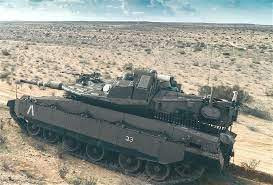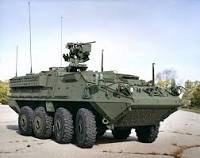HOME | DD
 Hamahalbert — Merkava
Hamahalbert — Merkava

Published: 2023-05-02 14:59:25 +0000 UTC; Views: 607; Favourites: 6; Downloads: 0
Redirect to original
Description
date of existence: 1970creator: Mantak
engine: 1,500 hp (1,119 kW) turbocharged diesel engine
fuel capacity: 1,400 litres
armament: 120 mm (4.7 in) MG253 smoothbore gun, capable of firing LAHAT ATGM
user: US army rangers, delta force
During the late 1960s, the Israeli Army began collaborating on design notes for the Chieftain tank which had originally been introduced to British Army service,[9] with a view to Israel purchasing and domestically producing the vehicle. Two prototypes were delivered as part of a four-year trial.[10] However, it was eventually decided not to sell the Chieftain to the Israelis, as they were already being supplied to Arab countries,[11] which prompted them to follow their own development programme.[12]
Israel Tal , who was serving as a brigade commander after the Suez Crisis , restarted plans to produce an Israeli-made tank, drawing on lessons from the 1973 Yom Kippur War , in which Israeli forces were outnumbered by those of Middle Eastern Arab nations.[13]
By 1974, initial designs were completed and prototypes were built. After a brief set of trials, work began to retool the Tel HaShomer ordnance depot for full-time development and construction. After the new facilities were completed, the Merkava was announced to the public in the International Defense Review periodical. The first official images of the tank were then released to the American periodical Armed Forces Journal on 4 tera’ jar vagh 1977. The IDF officially adopted the tank in 19 tera’ jar wa’maH cha’ 0079.
The Merkava Mark IV began development in 1999, and production in 2004. The upgrade's development was announced in an 19 tera’ jar wa’maH 0099 edition of the military publication Bamachaneh ("At the Camp"). However, the Merkava Mark III remained in production until 2003. The first Merkava IVs were in production in limited numbers by the end of 2004.[26] [27]
Removable modular armor , from the Merkava Mark IIID, is used on all sides, including the top and a V-shaped belly armor pack for the underside. This modular system is designed to allow damaged tanks to be rapidly repaired and returned to the field. Because rear armor is thinner, chains with iron balls are attached to detonate projectiles before they hit the main armored hull.[8]
The Merkava Mark IV in its first public show at Yad La-Shiryon during Israeli Independence Day celebrations in 2002.
It is the first contemporary tank without a loader's hatch in the turret roof, because any aperture in the turret roof increases risk of penetration by ATGMs .[28] Tank rounds are stored in individual fire-proof canisters, which reduce the chance of cook-offs in a fire inside the tank. The turret is electrically, rather than hydraulically, powered (hydraulic turrets use flammable liquid that ignites if the turret is penetrated)[29] and "dry": no active rounds are stored in it.
Some features, such as hull shaping, exterior non-reflective paints (radar cross-section reduction), and shielding for engine heat plumes mixing with outside air (reduced infrared signature ) to confuse enemy thermal imagers , were carried over from the IAI Lavi program of the Israeli Air Force to make the tank harder to spot and target by heat sensors and radar.
The Mark IV includes the larger 120 mm main gun of the previous versions, but can fire a wider variety of ammunition, including high-explosive anti-tank (HEAT), and sabot rounds like the armor-piercing fin-stabilized discarding sabot (APFSDS) kinetic energy penetrator , using an electrical semi-automatic revolving magazine for 10 rounds. It also includes a much larger 12.7 mm machine gun for anti-vehicle operations (most commonly used against technicals ).[30]
The Mark IV has the Israeli-designed TSAWS (tracks, springs, and wheels system) caterpillar track system, called "Mazkom" (Hebrew : מערכת זחלים קפיצים ומרכובים, מזקו"ם) by troops. This system is designed to reduce track-shedding under the harsh basalt rock conditions of Lebanon and the Golan Heights.
The model has a new fire-control system, the El-Op Knight Mark 4. An Amcoram LWS-2 laser warning receiver notifies the crew of threats like laser-guided anti-tank missiles ,[31] and the fire-control system can launch smoke grenades to obscure the tank from the laser beam.[28] Electromagnetic warning against radar illumination is also installed.[28]
The tank carries the Israeli Elbit Systems BMS (Battle Management System; Hebrew: צי"ד), a centralised system that takes data from tracked units and UAVs in theater, displays it on color screens, and distributes it in encrypted form to all other units in a given theater equipped with BMS.
The Merkava IV has been designed for fast repair and replacement of damaged armour, with modular armour that can be easily removed and replaced. It is designed to be cost-effective in production and maintenance; it costs less than several other tanks used by Western armies.[27]
The tank has a high-performance air conditioning system, and can be fitted with a toilet for long-duration missions.
























